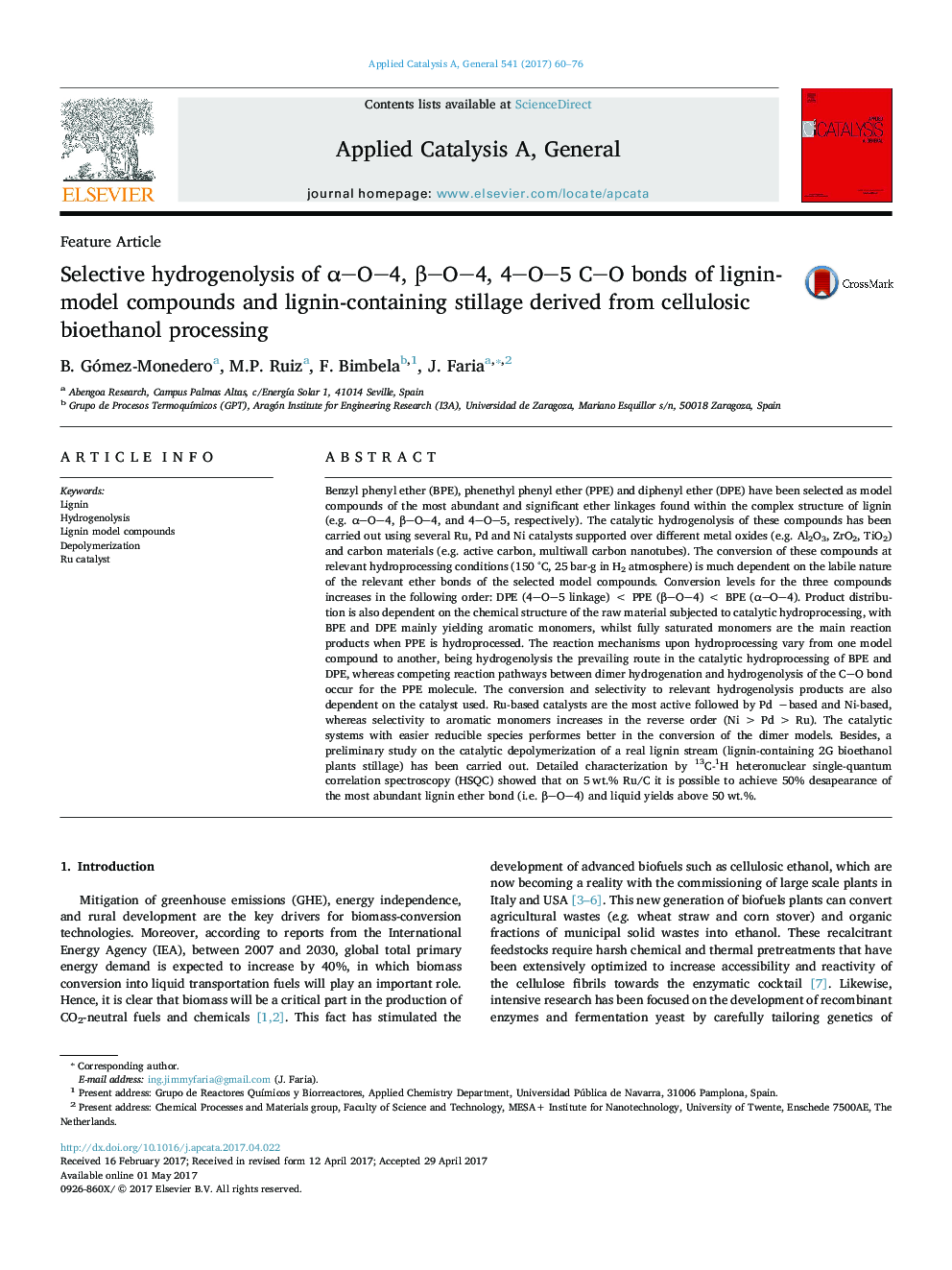| کد مقاله | کد نشریه | سال انتشار | مقاله انگلیسی | نسخه تمام متن |
|---|---|---|---|---|
| 4755631 | 1418505 | 2017 | 17 صفحه PDF | دانلود رایگان |

- Cleavage of targeted CO bonds of lignin and lignin-model compounds have been achieved on Ru/C.
- Ru catalysts showed a higher activity for hydrogenolysis in comparison to Pd and Ni catalysts.
- Catalyst support plays an important role in the hydrogenolysis reaction, being carbon-supported catalysts the most active ones towards CO cleavage.
Benzyl phenyl ether (BPE), phenethyl phenyl ether (PPE) and diphenyl ether (DPE) have been selected as model compounds of the most abundant and significant ether linkages found within the complex structure of lignin (e.g. αO4, βO4, and 4O5, respectively). The catalytic hydrogenolysis of these compounds has been carried out using several Ru, Pd and Ni catalysts supported over different metal oxides (e.g. Al2O3, ZrO2, TiO2) and carbon materials (e.g. active carbon, multiwall carbon nanotubes). The conversion of these compounds at relevant hydroprocessing conditions (150 °C, 25 bar-g in H2 atmosphere) is much dependent on the labile nature of the relevant ether bonds of the selected model compounds. Conversion levels for the three compounds increases in the following order: DPE (4O5 linkage) < PPE (βO4) < BPE (αO4). Product distribution is also dependent on the chemical structure of the raw material subjected to catalytic hydroprocessing, with BPE and DPE mainly yielding aromatic monomers, whilst fully saturated monomers are the main reaction products when PPE is hydroprocessed. The reaction mechanisms upon hydroprocessing vary from one model compound to another, being hydrogenolysis the prevailing route in the catalytic hydroprocessing of BPE and DPE, whereas competing reaction pathways between dimer hydrogenation and hydrogenolysis of the CO bond occur for the PPE molecule. The conversion and selectivity to relevant hydrogenolysis products are also dependent on the catalyst used. Ru-based catalysts are the most active followed by Pd âbased and Ni-based, whereas selectivity to aromatic monomers increases in the reverse order (Ni > Pd > Ru). The catalytic systems with easier reducible species performes better in the conversion of the dimer models. Besides, a preliminary study on the catalytic depolymerization of a real lignin stream (lignin-containing 2G bioethanol plants stillage) has been carried out. Detailed characterization by 13C-1H heteronuclear single-quantum correlation spectroscopy (HSQC) showed that on 5 wt.% Ru/C it is possible to achieve 50% desapearance of the most abundant lignin ether bond (i.e. βO4) and liquid yields above 50 wt.%.
122
Journal: Applied Catalysis A: General - Volume 541, 5 July 2017, Pages 60-76